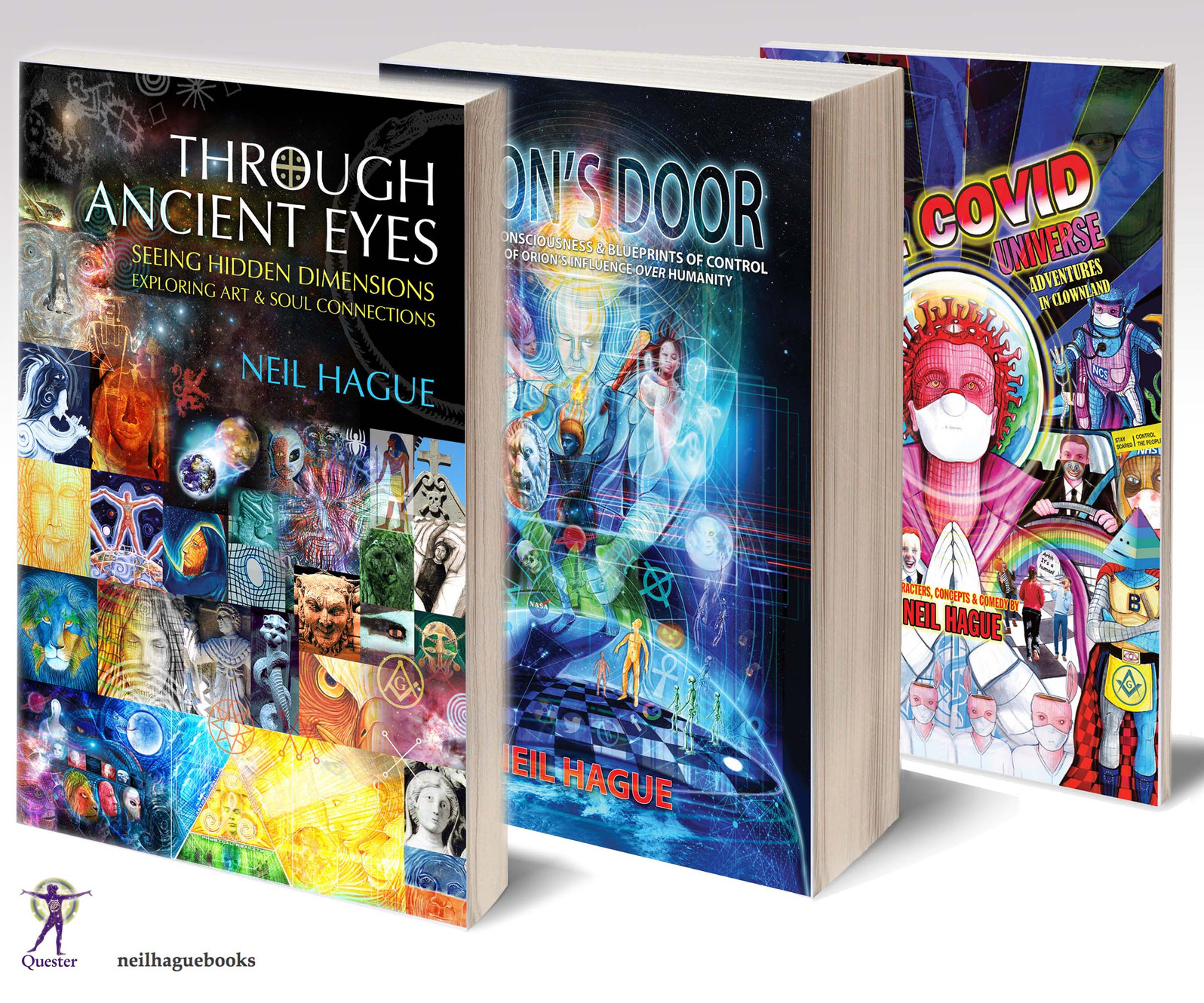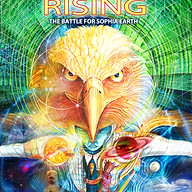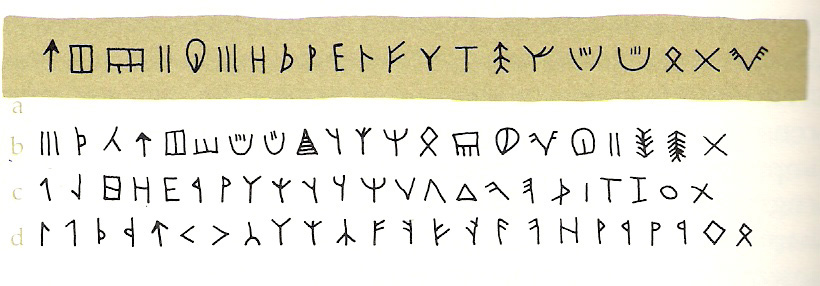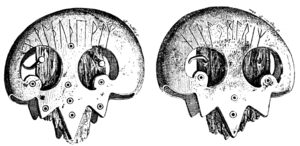Miles Mathis has also taken a critical look at Klaus Schwab: http://mileswmathis.com/schwab.pdf .To date I think the best deep dive into Klaus Schwab and family's secret Nazi past has been the recent Schwab Family Values by Johnny Vedmore on Unlimited Hangout.
You are using an out of date browser. It may not display this or other websites correctly.
You should upgrade or use an alternative browser.
You should upgrade or use an alternative browser.
Coronavirus Pandemic: Apocalypse Now! Or exaggerated scare story?
- Thread starter wanderingthomas
- Start date
Yeah, and out of all the members of Parliament, so far very few seem to question the governments actions.Hello Finland
The panic making of a "third wave" goes very strong up here ! Speaking about that. Finland closes down the capital of Helsinki - plus a couple of communes. Also; they declare 3 weeks of "State Emergency", but starting 8 March 2021 for the whole country. With the motivation; to be able to close restaurants juridically, because no other Finnish law can otherwise permit closures.
So, they always find a 'funny' way around basic laws. It all just sounds like one-way traffic to me.
One of those very few, is very active, being often a guest in finnish alternative media. His name is Ossi Tiihonen. He appears to have very sharp eyes at the ongoing madness.
As an example, he made official complaint about demonstration in last december, which police interrupted. Parliamentary ombudsman's response was elusive(or is it evasive), being dead end to the case. He has documented that, as well as other cases in his website(in finnish): Ossi Tiihonen.
In one of the videos he mentioned, that the plain abuse of this overall situation is about to have criterion/justify Nuremburg kind of trials (Doctors' trial - Wikipedia).
He says also, that how is it possible to start such a judicial proceeding, as the legal field is so corrupted.
The absolute peak of ridiculousness has just come out of Croatia.
They’ve finally decided to open cafe bar terraces. Aside from all the usual nonsense about the number of guests and distance between tables, we also have this little gem.
I can’t seem to use the quote function for some reason but here it is:
“Nije dopušteno puštanje glazbe kako gosti ne bi glasno pričali te na taj način širili aerosol i povećavali mogućnost zaraze.”
My translation:
“Music is not allowed so that the guests don’t talk loudly and in this way spread aerosol and increase the possibility of contagion.”
I’m still laughing about this. It seems though, that the national association of composers and other musician associations have put pressure on the government to allow music so that musicians can get at least some money from their music being played in public. This is according to the newsletter I got from them being a member of the association, but luckily not working actively in the industry anymore. According to them, music will be limited to 50 decibels. Anyone who doesn’t know decibels should understand that 50 dB is rather quiet and will be easily drowned out by the chatter and traffic noise. Well, at least the musicians will get something out of it even if nobody actually hears any of their music while drinking their coffee.
Anyway, the moral of the story is, “don’t be loud, save lives”.
They’ve finally decided to open cafe bar terraces. Aside from all the usual nonsense about the number of guests and distance between tables, we also have this little gem.
I can’t seem to use the quote function for some reason but here it is:
“Nije dopušteno puštanje glazbe kako gosti ne bi glasno pričali te na taj način širili aerosol i povećavali mogućnost zaraze.”
My translation:
“Music is not allowed so that the guests don’t talk loudly and in this way spread aerosol and increase the possibility of contagion.”
I’m still laughing about this. It seems though, that the national association of composers and other musician associations have put pressure on the government to allow music so that musicians can get at least some money from their music being played in public. This is according to the newsletter I got from them being a member of the association, but luckily not working actively in the industry anymore. According to them, music will be limited to 50 decibels. Anyone who doesn’t know decibels should understand that 50 dB is rather quiet and will be easily drowned out by the chatter and traffic noise. Well, at least the musicians will get something out of it even if nobody actually hears any of their music while drinking their coffee.
Anyway, the moral of the story is, “don’t be loud, save lives”.
Dr. Covid T-shirts are here! Be the first in your lockdown to get one!


 www.neilhaguebooks.com
www.neilhaguebooks.com


Product Page | Neilhaguebooks
 www.neilhaguebooks.com
www.neilhaguebooks.com
Nucifera
Dagobah Resident
Informed consent — is this fundamental right being respected?
You don’t need to sign something to give consent – baring your arm is sufficient. In the case of vaccination, this is, in essence, your gesture that gives the vaccinator permission to touch you and inject you. Failure to seek your permission would typically be regarded, legally, as assault or battery. The real problem therefore isn’t with the consent itself, but with the information that should precede the issue of consent.
The 3 prerequisites for informed consent
For consent to be valid you need 3 things:
- It must be given voluntarily — without coercion or deceit.
- It must be given by an individual who has mental capacity, and
- BEFORE giving consent, a person needs to have been fully informed about the issue. That includes being informed about what the risks and benefits of the treatment or vaccination are, as well as the risks and benefits of going without the treatment or vaccination, and what alternate options might be available.
Do health authority vaccine claims constitute deceit?
Health authorities around the world continue to claim that covid-19 vaccines are 'safe'. However, according to the Collins dictionary, this means that: “Something that is safe does not cause physical harm or danger.” 'Safe' claims are are routinely made by organisations like the UK NHS, the Centers for Disease Control in the USA and the World Health Organization.
A search we carried out earlier today of the VAERS database in the USA shows that nearly 8,000 adverse events have been reported so far (note: as many as 90% of adverse reactions often go unreported), and over 1.5% of these involved death. It is then arguably deceitful to refer to these experimental vaccines as "safe".
Information chasm
Even if can be argued that the existing safety claims, advertising campaigns or pressure from some sectors of the health professions are neither coercive nor deceitful, it is this last prerequisite concerning the provision of information where mass vaccination programs typically fall short. Given the lack of vaccine transparency, vaccinators themselves are not properly informed so are generally not in any position to offer accurate information that might be available in the public domain, but is generally not well known.
Information that should be freely communicated includes the fact that the vaccines are experimental and unproven. Those considering giving consent should be told about the vaccines' reliance on synthetic biology that has never been tested at scale. But it also includes information on known risks and benefits from Phase 3 trials, and that these trials are still under way and some won’t be complete for over 18 months (e.g. January 31, 2023, for Pfizer mRNA vaccine).
Put simply — without vaccine transparency, informed consent is just not possible.

Informed consent - is this fundamental right being respected?
Why vaccinators may be breaking the law
The crazy train keeps rolling down the tracks:
Johnson & Johnson Reportedly Planning COVID-19 Vaccine Trial To Include Infants
Going full Nazi Dr. Mengele now.
Johnson & Johnson Reportedly Planning COVID-19 Vaccine Trial To Include Infants
Johnson, the company that received emergency use authorization for the first one-shot COVID-19 vaccine in the United States, reportedly plans to conduct clinical trials that extend beyond adults, including to younger teenagers and then infants.
According to The New York Times, Food and Drug Administration officials who reviewed the emergency authorization material at a meeting Saturday discussed Johnson & Johnson’s future trial plans. Those plans include conducting trials for healthy children between 12 and 18 years old, and then all children up to 18 years old, including newborns, to analyze safety and immune responses to the COVID-19 vaccine.
Going full Nazi Dr. Mengele now.
Speaking of Nazis, saw this regarding CPAC:
Critics on Twitter have been chilled by a major design element of the stage at the Conservative Political Action Conference that eerily resembles the insignia of a volunteer unit of Adolf Hitler’s notorious Waffen SS.
A square whose corner juts out from the CPAC stage from connected back-to-back “check marks” bears a striking resemblance to the ancient Norse Odal Rune adopted by the SS unit, which would be particularly apparent from the stage side.
The Anti-Defamation League has noted that after World War II the Odal (or Othala) Rune became commonly used by white supremacists in Europe and North America.
In response to some 100,000 tweets about the issue and climbing, CPAC organizer Matt Schlapp angrily blasted the “stage design conspiracies” as “outrageous and slanderous.” He touted CPAC’s “long standing commitment to the Jewish community.”
CPAC was forced earlier this week to cancel scheduled speaker Young Pharaoh after his anti-Semitic rants calling Judaism a “complete lie” (and worse) were revealed in the media.
The Snopes fact-checking site reported Saturday that it was “unable to verify at the time of this writing whether the allusion to the Nazi symbol was made intentionally or consciously by any CPAC organizers.”
But it did conclude that the stage definitely “resembled a version of the Odal Rune symbol ... used by a number of Nazi divisions.”

Well, some people believe there is no such thing as coincidences . . .
Considering Trump's Operation Warp Speed Vaccine rollout, would our current situation be that much different had he achieved another term in office? Is any area of officialdom devoid of Nazi influence some way or another? Operation Paperclip brought the enemy inside the gates and they've been hard at it ever since.
CPAC Organizer Denounces Critics Spotting What Looks Like Nazi SS Symbol On Stage
CPAC head Matt Schlapp angrily denied any resemblance and touted the organization’s excellent relationship with the Jewish community.Critics on Twitter have been chilled by a major design element of the stage at the Conservative Political Action Conference that eerily resembles the insignia of a volunteer unit of Adolf Hitler’s notorious Waffen SS.
A square whose corner juts out from the CPAC stage from connected back-to-back “check marks” bears a striking resemblance to the ancient Norse Odal Rune adopted by the SS unit, which would be particularly apparent from the stage side.
The Anti-Defamation League has noted that after World War II the Odal (or Othala) Rune became commonly used by white supremacists in Europe and North America.
In response to some 100,000 tweets about the issue and climbing, CPAC organizer Matt Schlapp angrily blasted the “stage design conspiracies” as “outrageous and slanderous.” He touted CPAC’s “long standing commitment to the Jewish community.”
CPAC was forced earlier this week to cancel scheduled speaker Young Pharaoh after his anti-Semitic rants calling Judaism a “complete lie” (and worse) were revealed in the media.
The Snopes fact-checking site reported Saturday that it was “unable to verify at the time of this writing whether the allusion to the Nazi symbol was made intentionally or consciously by any CPAC organizers.”
But it did conclude that the stage definitely “resembled a version of the Odal Rune symbol ... used by a number of Nazi divisions.”

Well, some people believe there is no such thing as coincidences . . .
Considering Trump's Operation Warp Speed Vaccine rollout, would our current situation be that much different had he achieved another term in office? Is any area of officialdom devoid of Nazi influence some way or another? Operation Paperclip brought the enemy inside the gates and they've been hard at it ever since.
How strange is it when you come across something completely by chance that jibes with something else out of the blue?
After posting about the CPAC stage controversy, I decided to look up Odal rune on wiki:
 en.wikipedia.org
en.wikipedia.org
Included was this:
 This article contains runic characters.
This article contains runic characters.
From the runic link:
Back on the Odal rune wiki:

Upper Paleolithic writing recovered from Magdalenian cave sites (top) compared to characters in three early written languages: (b) Indus valley signs, (c) Greek and (d) Runic. Settegast (p. 28) after Forbes and Crowder, 1979.
Naturally I thought that's one heck of a coincidence. Whether it's a "meaningful coincidence", I don't know. Just brings to mind the Nordic references of the Cs communications which I also revisited due to reading the Real Direct 4D STO Contact? thread started last Tuesday. From Session 4 March 1995:
Again, such a coincidence, but of any significance? Is mass human consciousness trying to tell me something -
Sorry if this is just noise.
Synchronicity is a concept, first introduced by analytical psychologist Carl Jung, which holds that events are "meaningful coincidences" if they occur with no causal relationship yet seem to be meaningfully related.
After posting about the CPAC stage controversy, I decided to look up Odal rune on wiki:
Othala - Wikipedia
Odal was associated with the concept of inheritance in ancient Scandinavian property law. Some of these laws are still in effect today, and govern Norwegian property. These are the Åsetesrett (homestead right), and the Odelsrett (allodial right). The tradition of Udal law found in Shetland and Orkney in Scotland, and also in Manx law on the Isle of Man, is from the same origin.
Included was this:

From the runic link:
Runes are the letters in a set of related alphabets known as runic alphabets, which were used to write various Germanic languages before the adoption of the Latin alphabet and for specialised purposes thereafter. The Scandinavian variants are also known as futhark or fuþark (derived from their first six letters of the alphabet: F, U, Þ, A, R, and K); the Anglo-Saxon variant is futhorc or fuþorc (due to sound-changes undergone in Old English by the names of those six letters).
Runology is the study of the runic alphabets, runic inscriptions, runestones, and their history. Runology forms a specialised branch of Germanic linguistics.
The earliest runic inscriptions date from around 150 AD. The characters were generally replaced by the Latin alphabet as the cultures that had used runes underwent Christianisation, by approximately 700 AD in central Europe and 1100 AD in northern Europe. However, the use of runes persisted for specialized purposes in northern Europe. Until the early 20th century, runes were used in rural Sweden for decorative purposes in Dalarna and on Runic calendars.
Back on the Odal rune wiki:
So I saw these illustrations and thought, wait a minute, I just saw something with that writing - where??? Took a bit of searching, but it was in a link from the The New History of Mankind: Who Are we? What are we? How did we get here? thread which I began re-reading yesterday. The link was to PLATO PREHISTORIAN AND GENETICIST. The image I remembered below - and there's the Odal rune - top row, 3rd from the right as well as at the very end:
Illustration of the Thorsberg chape showing the runic inscriptions on both sides

Upper Paleolithic writing recovered from Magdalenian cave sites (top) compared to characters in three early written languages: (b) Indus valley signs, (c) Greek and (d) Runic. Settegast (p. 28) after Forbes and Crowder, 1979.
Naturally I thought that's one heck of a coincidence. Whether it's a "meaningful coincidence", I don't know. Just brings to mind the Nordic references of the Cs communications which I also revisited due to reading the Real Direct 4D STO Contact? thread started last Tuesday. From Session 4 March 1995:
A: Find a "Nordic." They are on Earth posing as humans.
Again, such a coincidence, but of any significance? Is mass human consciousness trying to tell me something -

Sorry if this is just noise.
They will soon dictate which music we can and cannot listen to, for our own good of course!“Music is not allowed so that the guests don’t talk loudly and in this way spread aerosol and increase the possibility of contagion.”
Looks like the state of emergency will be extended until December in Victoria. I think there will be more protests and violence down there. Things could get pretty ugly.
Along with low interest rates, stimulus packages for the building industry and more grants for first home buyers, real estate prices have risen in Australia when they'd predicted to fall. Artificial support of the market might create another housing bubble collapse.
A friend who is an engineer and completes property inspections for purchase contracts adds that it's not just new home buyers, a lot of people are moving interstate from Victoria and also migrating from overseas to Queensland because of it's milder reaction to virus restrictions. Also city people have been more interested in regional properties. Apparently she is totally snowed under at the moment and her business has been thriving since the scamdemic begun. She has put on additional staff and still needs more according to her.
She also got an urgent contract from local government to engineer plans for upgrading an area of the local civic centre to become a mass vaccination centre and was given a week to have it completed for the vaccine roll outs.
Along with low interest rates, stimulus packages for the building industry and more grants for first home buyers, real estate prices have risen in Australia when they'd predicted to fall. Artificial support of the market might create another housing bubble collapse.
A friend who is an engineer and completes property inspections for purchase contracts adds that it's not just new home buyers, a lot of people are moving interstate from Victoria and also migrating from overseas to Queensland because of it's milder reaction to virus restrictions. Also city people have been more interested in regional properties. Apparently she is totally snowed under at the moment and her business has been thriving since the scamdemic begun. She has put on additional staff and still needs more according to her.
She also got an urgent contract from local government to engineer plans for upgrading an area of the local civic centre to become a mass vaccination centre and was given a week to have it completed for the vaccine roll outs.
I've decided to avoid air travel if at all possible. Within USA, is anyone aware of state/county line closures, or rumors of such? I expect to be making a few interstate trips by car in the next 6-18 months.
I'm going to see a new PCP this week. Going to ask him about getting a vaccine exemption document because of history of Stevens-Johnson (3X) to Septra. I think maybe the Mexican MD that died after vaccination had a similar history. There's also the issue of the nocebo effect, which can be powerful.
Just got word I've been given a pass to come back to work at one of my jobs w/o the vaccine, based on S-J history, thank goodness.
I'm going to see a new PCP this week. Going to ask him about getting a vaccine exemption document because of history of Stevens-Johnson (3X) to Septra. I think maybe the Mexican MD that died after vaccination had a similar history. There's also the issue of the nocebo effect, which can be powerful.
Just got word I've been given a pass to come back to work at one of my jobs w/o the vaccine, based on S-J history, thank goodness.
XPan
The Living Force
Just now, I stumbled across this message
from the World Doctors Alliance's Telegram channel, and it goes like this:
The greatest Nuremberg of all time is on its way
17/02/2021
By Jean-Michel Grau
Right now, a second Nuremberg tribunal that is in preparation, with a class action lawsuit being set up under the aegis of thousands of lawyers worldwide behind the American-German lawyer Reiner Fuellmich, who is prosecuting those responsible for the Covid-19 scandal manipulated by the Davos Forum.
In this respect, it is worth recalling that Reiner Fuellmich is the lawyer who succeeded in condemning the automobile giant Volkswagen in the case of the tampered catalytic converters. And it is this same lawyer who succeeded in condemning Deutsche Bank as a criminal enterprise.
According to Reiner Fuellmich, all the frauds committed by German companies are derisory compared to the damage that the Covid-19 crisis has caused and continues to cause. This Covid-19 crisis should be renamed the “Covid-19 Scandal” and all those responsible should be prosecuted for civil damages due to manipulations and falsified test protocols. Therefore, an international network of business lawyers will plead the biggest court case of all time, the Covid-19 fraud scandal, which has meanwhile turned into the biggest crime against humanity ever committed.
A Covid-19 commission of enquiry has been set up on the initiative of a group of German lawyers with the aim of bringing an international class action lawsuit using Anglo-Saxon law. Here is the summarized translation of the last communication of Dr. Fuellmich of 15/02/2021
“The hearings of around 100 internationally renowned scientists, doctors, economists and lawyers, which have been conducted by the Berlin Commission of Inquiry into the Covid-19 affair since 10.07.2020, have in the meantime shown with a probability close to certainty that the Covid- 19 scandal was at no time a health issue. Rather, it was about solidifying the illegitimate power (illegitimate because it was obtained by criminal methods) of the corrupt “Davos clique” by transferring the wealth of the people to the members of the Davos clique, destroying, among other things, small and medium-sized enterprises in particular. Platforms such as Amazon, Google, Uber, etc. could thus appropriate their market share and wealth.”
My take:
I am honestly not sure if that what Rainer Fuellmich and his layers network do right now - equal to that of a new Nuremberg Tribunal. I believe Jean-Michel Grau might possibly mix up a Nuremberg 2.0 tribunal with that of the Class Action Lawsuits that are in progress.
I remember Fuellmich once spoke about, or was questioned about the possibility of a future Tribunal, and he answered that nothing exactly has been outlined yet how to proceed in that regard (a couple months ago). He did say, that it leans towards a necessity to have a Nuremberg Tribunal 2.0 ... but as of now, I do believe they are two different things. Also worth of adding is, that the US does not recognize any international Tribunals.
What cannot be ruled out is that the lawyer network, which also works internationally now, and all the expertise, witness and evidence gathered, though the Investigate Corona Committee in Berlin, already provides a fundament of vital information, useful for a future Tribunal for Crimes against Humanity.
from the World Doctors Alliance's Telegram channel, and it goes like this:
The greatest Nuremberg of all time is on its way
17/02/2021
By Jean-Michel Grau
Right now, a second Nuremberg tribunal that is in preparation, with a class action lawsuit being set up under the aegis of thousands of lawyers worldwide behind the American-German lawyer Reiner Fuellmich, who is prosecuting those responsible for the Covid-19 scandal manipulated by the Davos Forum.
In this respect, it is worth recalling that Reiner Fuellmich is the lawyer who succeeded in condemning the automobile giant Volkswagen in the case of the tampered catalytic converters. And it is this same lawyer who succeeded in condemning Deutsche Bank as a criminal enterprise.
According to Reiner Fuellmich, all the frauds committed by German companies are derisory compared to the damage that the Covid-19 crisis has caused and continues to cause. This Covid-19 crisis should be renamed the “Covid-19 Scandal” and all those responsible should be prosecuted for civil damages due to manipulations and falsified test protocols. Therefore, an international network of business lawyers will plead the biggest court case of all time, the Covid-19 fraud scandal, which has meanwhile turned into the biggest crime against humanity ever committed.
A Covid-19 commission of enquiry has been set up on the initiative of a group of German lawyers with the aim of bringing an international class action lawsuit using Anglo-Saxon law. Here is the summarized translation of the last communication of Dr. Fuellmich of 15/02/2021
“The hearings of around 100 internationally renowned scientists, doctors, economists and lawyers, which have been conducted by the Berlin Commission of Inquiry into the Covid-19 affair since 10.07.2020, have in the meantime shown with a probability close to certainty that the Covid- 19 scandal was at no time a health issue. Rather, it was about solidifying the illegitimate power (illegitimate because it was obtained by criminal methods) of the corrupt “Davos clique” by transferring the wealth of the people to the members of the Davos clique, destroying, among other things, small and medium-sized enterprises in particular. Platforms such as Amazon, Google, Uber, etc. could thus appropriate their market share and wealth.”
My take:
I am honestly not sure if that what Rainer Fuellmich and his layers network do right now - equal to that of a new Nuremberg Tribunal. I believe Jean-Michel Grau might possibly mix up a Nuremberg 2.0 tribunal with that of the Class Action Lawsuits that are in progress.
I remember Fuellmich once spoke about, or was questioned about the possibility of a future Tribunal, and he answered that nothing exactly has been outlined yet how to proceed in that regard (a couple months ago). He did say, that it leans towards a necessity to have a Nuremberg Tribunal 2.0 ... but as of now, I do believe they are two different things. Also worth of adding is, that the US does not recognize any international Tribunals.
What cannot be ruled out is that the lawyer network, which also works internationally now, and all the expertise, witness and evidence gathered, though the Investigate Corona Committee in Berlin, already provides a fundament of vital information, useful for a future Tribunal for Crimes against Humanity.
Nucifera
Dagobah Resident
New mammogram guidelines for women recently vaccinated for COVID-19
SALT LAKE CITY — Intermountain Healthcare doctors announced new mammogram guidelines Tuesday in response to a surprising new side effect of the COVID-19 vaccine. They say women who recently received a COVID-19 vaccine may have to reschedule their yearly mammogram.
In the past four weeks, doctors have seen swollen lymph nodes on screening mammograms of women who have recently been vaccinated. “Whenever we see these on a normal screening mammogram we call those patients back because it can either mean metastatic breast cancer which travels to the lymph nodes or lymphoma or leukemia.”
While inflammation is the body’s normal response to a vaccine, Dr. Parkinson says it’s surprising how many swollen lymph nodes they’ve been seeing. “With the Moderna vaccine it’s about 11% after the first dose and 16% after the second dose. We believe it’s comparable for the Pfizer vaccine as well.”

New mammogram guidelines for women recently vaccinated for COVID-19
Women should get their mammogram before their first dose of the vaccine, or four weeks after their second dose
XPan
The Living Force
Lawyer Reiner Fuellmich
says in his latest interview, in an excerpt with "Kinder & Corona Kongress" (Children & Corona Congress), though his Telegram channel, that the death rate in UK based elderly's care homes have risen by +64% after the genetic experimental injections started. I was not aware of that number - and frankly, find it chocking.
says in his latest interview, in an excerpt with "Kinder & Corona Kongress" (Children & Corona Congress), though his Telegram channel, that the death rate in UK based elderly's care homes have risen by +64% after the genetic experimental injections started. I was not aware of that number - and frankly, find it chocking.
XPan
The Living Force
What's wrong with Finland ?
In the Telegram channel of "World Doctors Alliance" via "Dr Ariyana Love" - I came across this twitter...

Prime Minister Sanna Marin and Minister of Labor Tuula Haatainen at the oral questioning session of Parliament on 18 February 2021 in Helsinki.
Newspaper ILTA SANOMAT • 19 Feb 2021
The government has completed a proposal that will allow extensive mandatory health inspections to be carried out in the future. These may include performing a corona test.
Refusal to undergo a compulsory medical examination could be punishable by a fine or up to three months' imprisonment. The law is due to enter into force in April. There has been a need to clarify the current legislation so that the right of the Regional State Administrative Agency (AVI) to decide on a compulsory health inspection of a large number of people becomes clearer. The current legislation may have given the impression that the decision would always require individual consideration.
Government Counselor Liisa Katajamäki from the Ministry of Social Affairs and Health says that extensive mandatory health checks can be carried out, for example, at airports and border crossing points, but also at a construction site, for example, if there is reason to suspect coronary infections. Inspection-related tests are performed by healthcare professionals. The change is intended to remain permanent and not just a corona epidemic.
PS:
I get the same weird vibe when I look at Finnish Prime Minister Sanna Martin, as I get with Prime Minister of New Zealand Janica Ardern. This strange obsessive (?) staring, chilly look in their eyes is.... I can't put finger on it.
But both play now in the same ballpark.
In the Telegram channel of "World Doctors Alliance" via "Dr Ariyana Love" - I came across this twitter...
Prime Minister Sanna Marin and Minister of Labor Tuula Haatainen at the oral questioning session of Parliament on 18 February 2021 in Helsinki.
Newspaper ILTA SANOMAT • 19 Feb 2021
The government has completed a proposal that will allow extensive mandatory health inspections to be carried out in the future. These may include performing a corona test.
Refusal to undergo a compulsory medical examination could be punishable by a fine or up to three months' imprisonment. The law is due to enter into force in April. There has been a need to clarify the current legislation so that the right of the Regional State Administrative Agency (AVI) to decide on a compulsory health inspection of a large number of people becomes clearer. The current legislation may have given the impression that the decision would always require individual consideration.
Government Counselor Liisa Katajamäki from the Ministry of Social Affairs and Health says that extensive mandatory health checks can be carried out, for example, at airports and border crossing points, but also at a construction site, for example, if there is reason to suspect coronary infections. Inspection-related tests are performed by healthcare professionals. The change is intended to remain permanent and not just a corona epidemic.
PS:
I get the same weird vibe when I look at Finnish Prime Minister Sanna Martin, as I get with Prime Minister of New Zealand Janica Ardern. This strange obsessive (?) staring, chilly look in their eyes is.... I can't put finger on it.
But both play now in the same ballpark.
Last edited:
